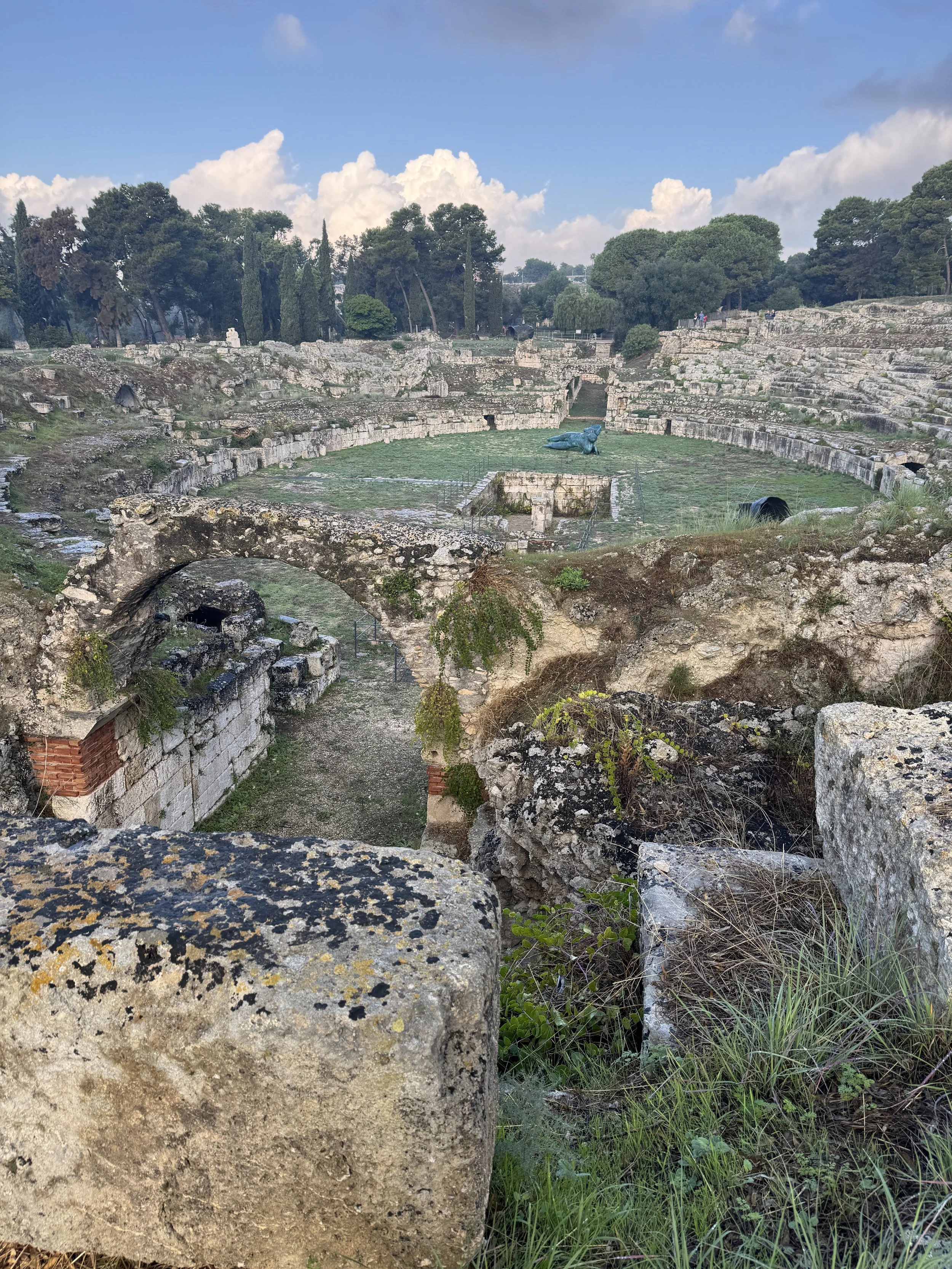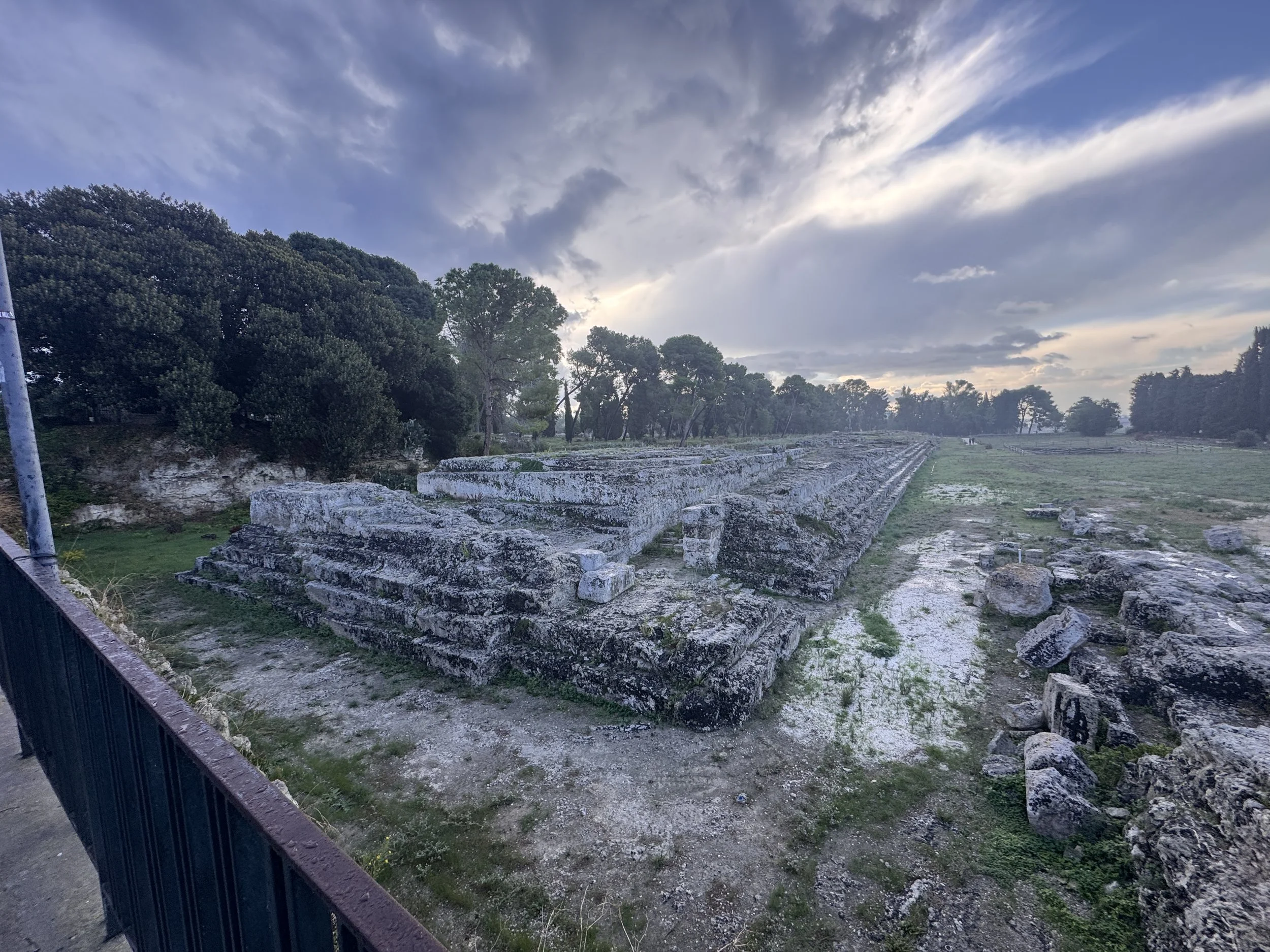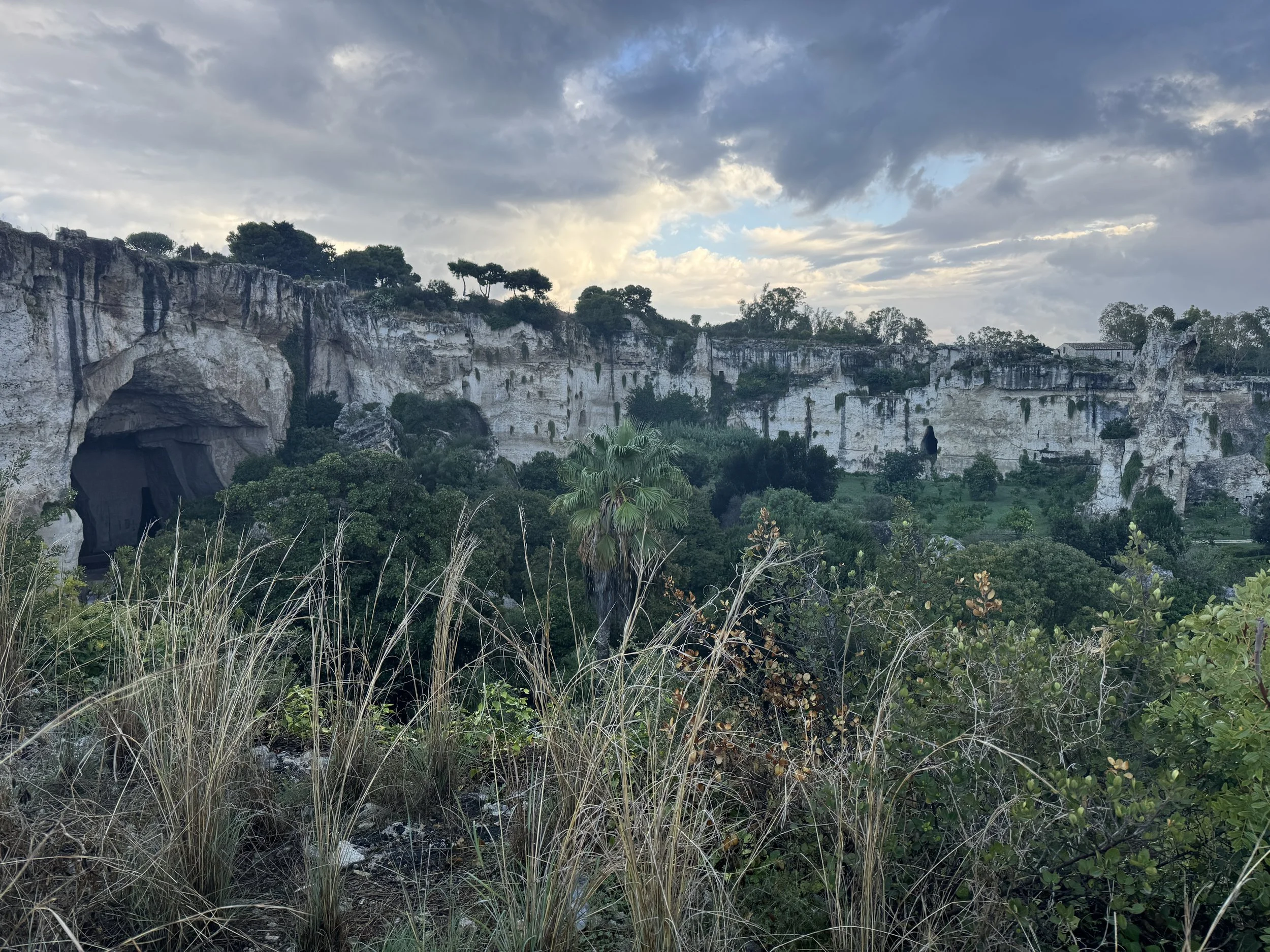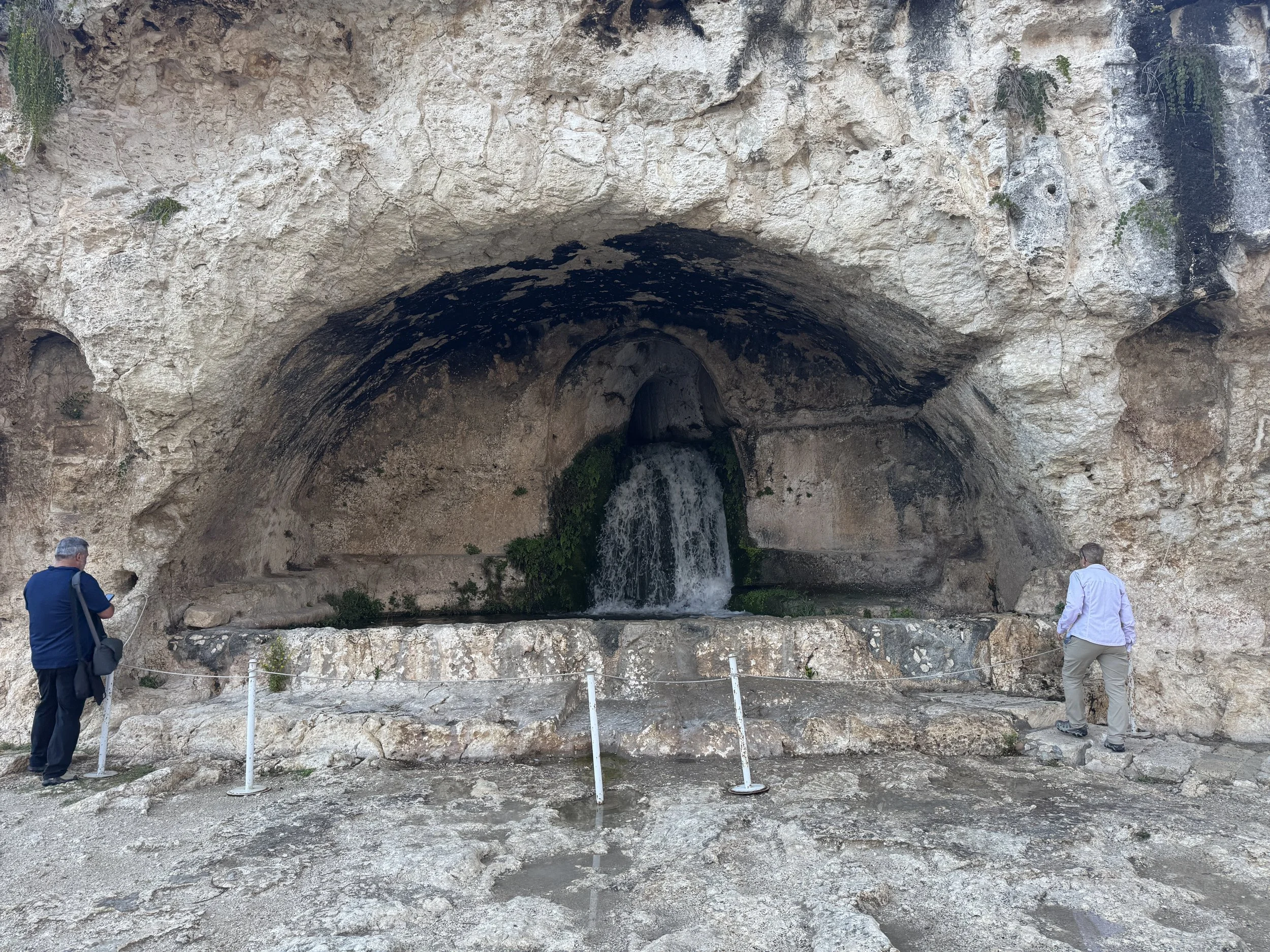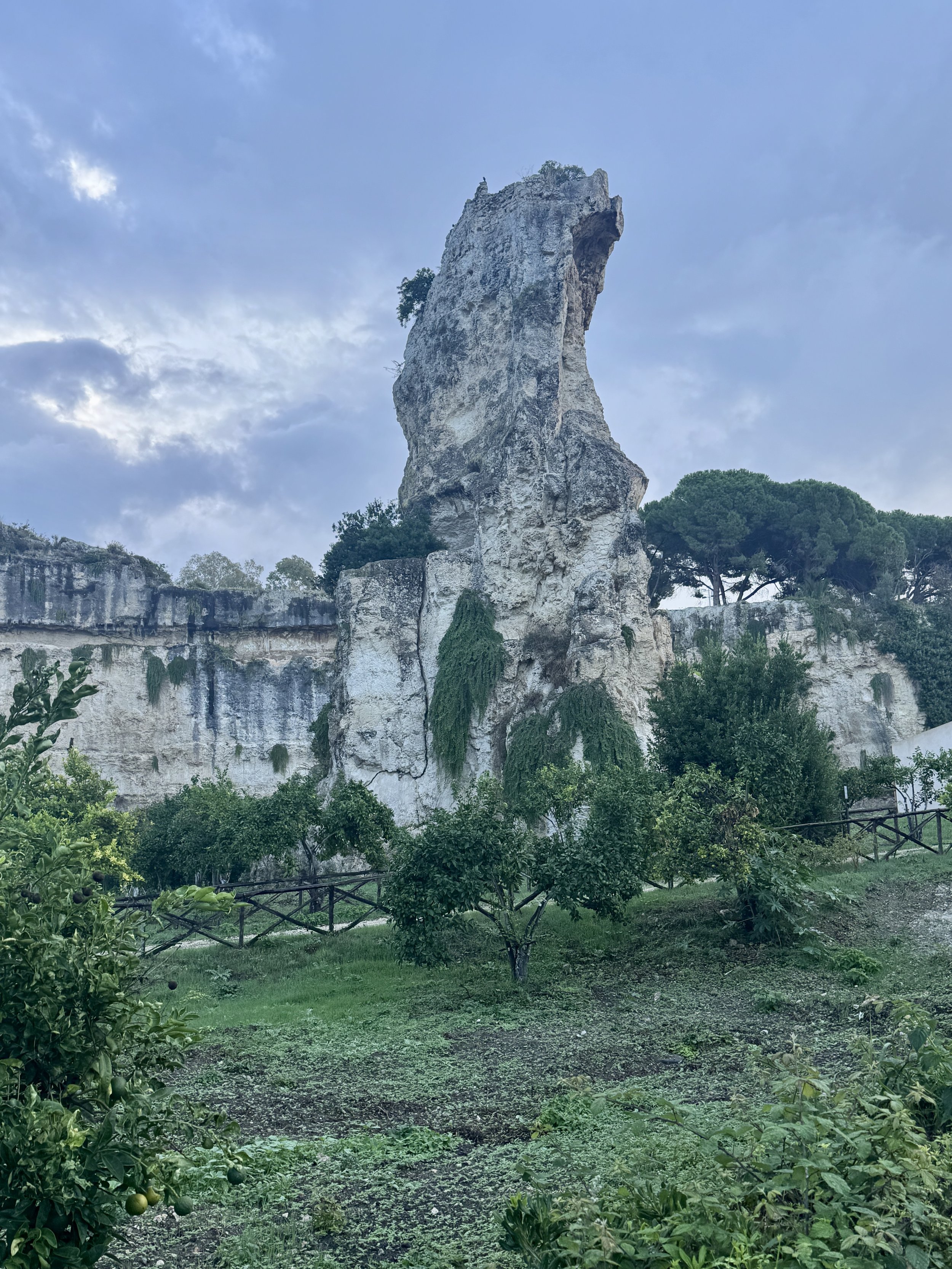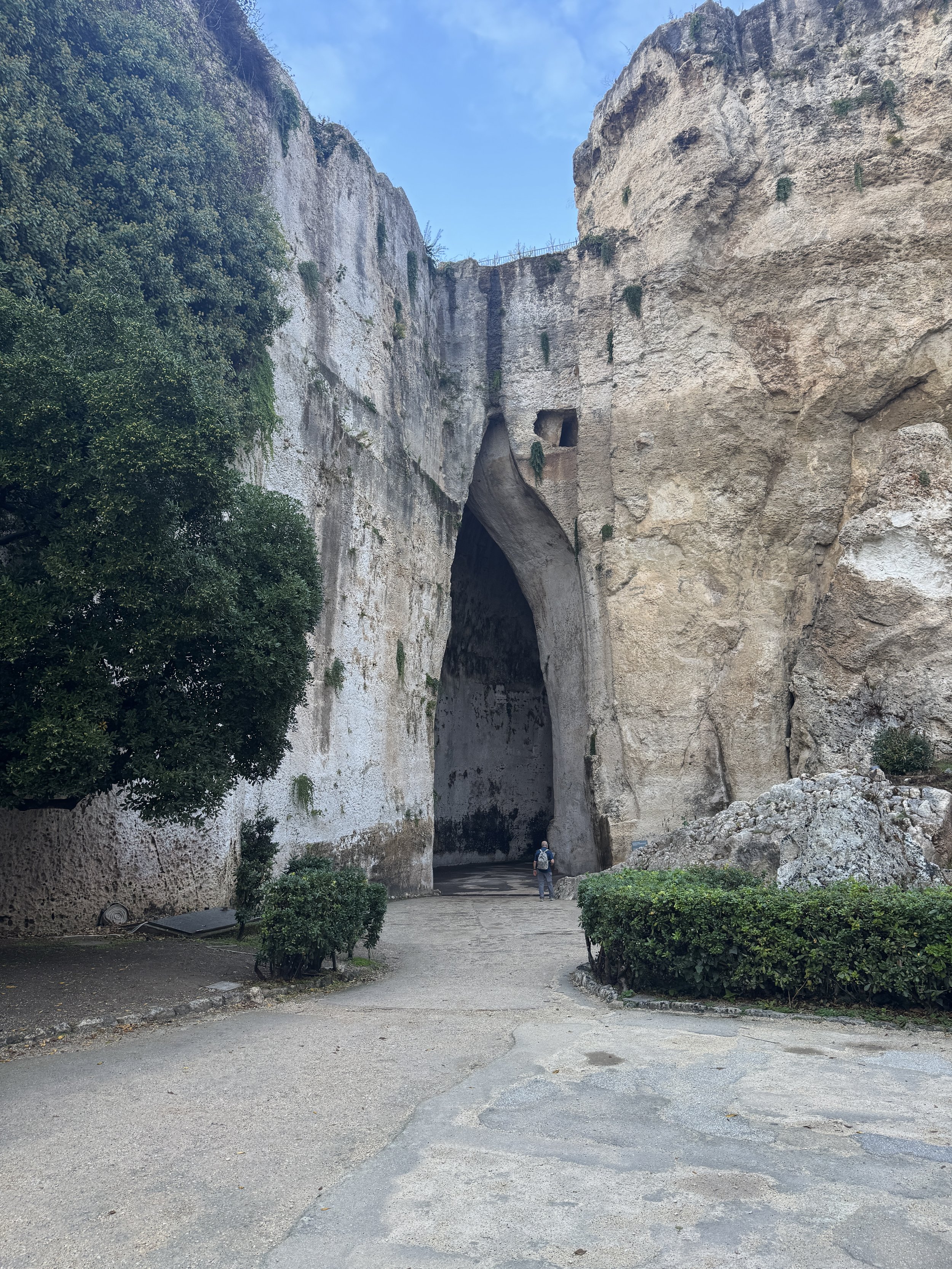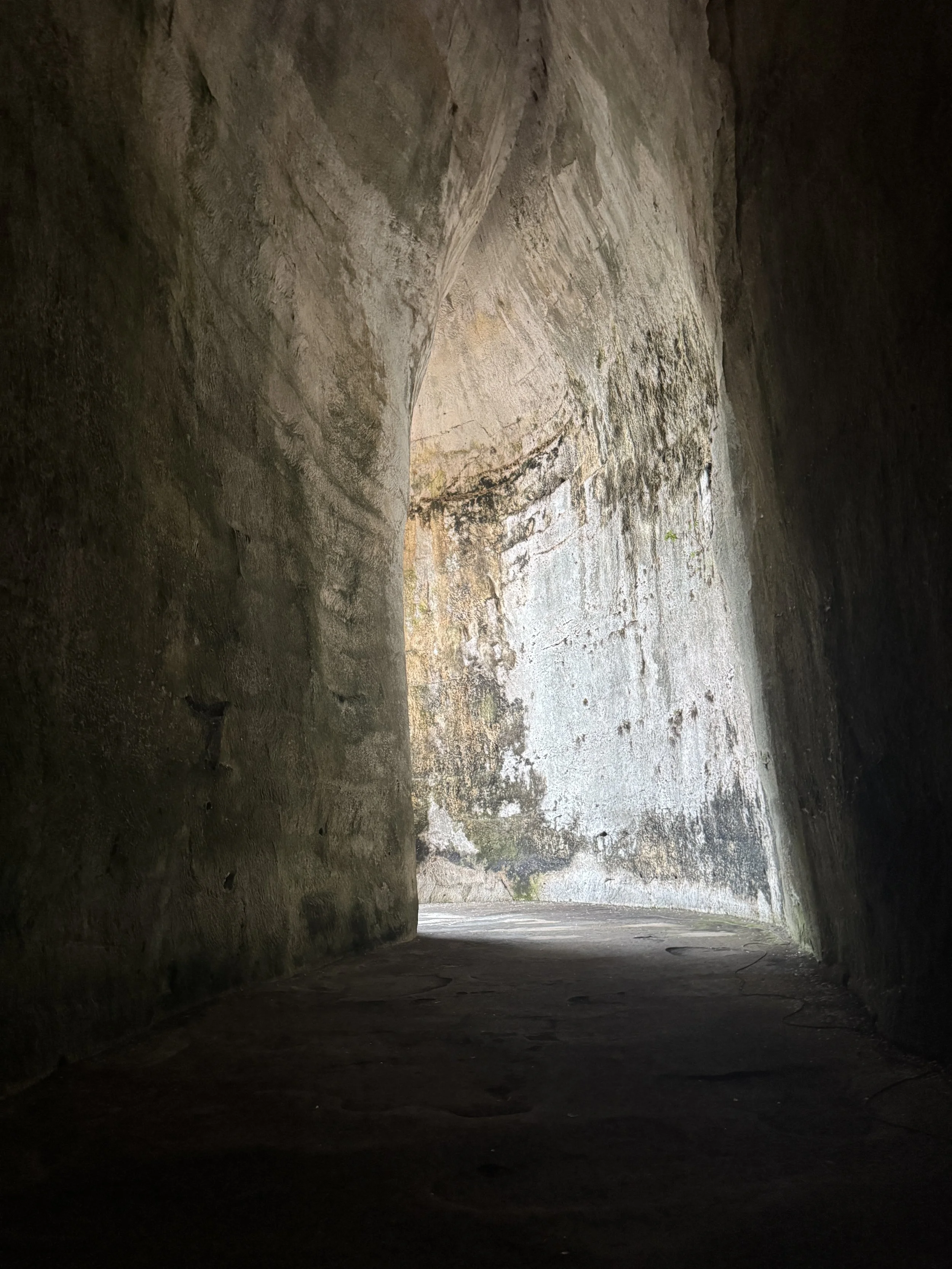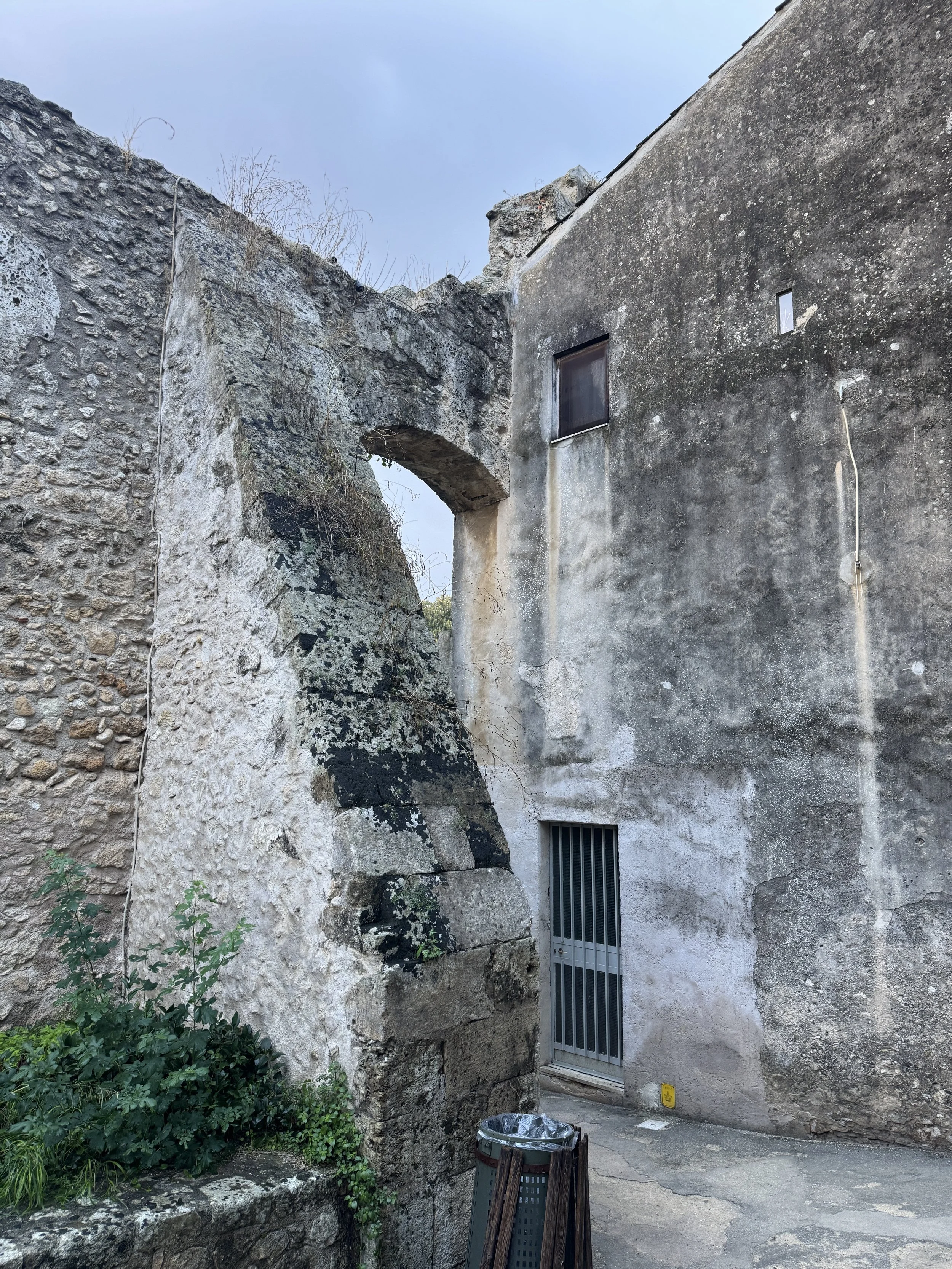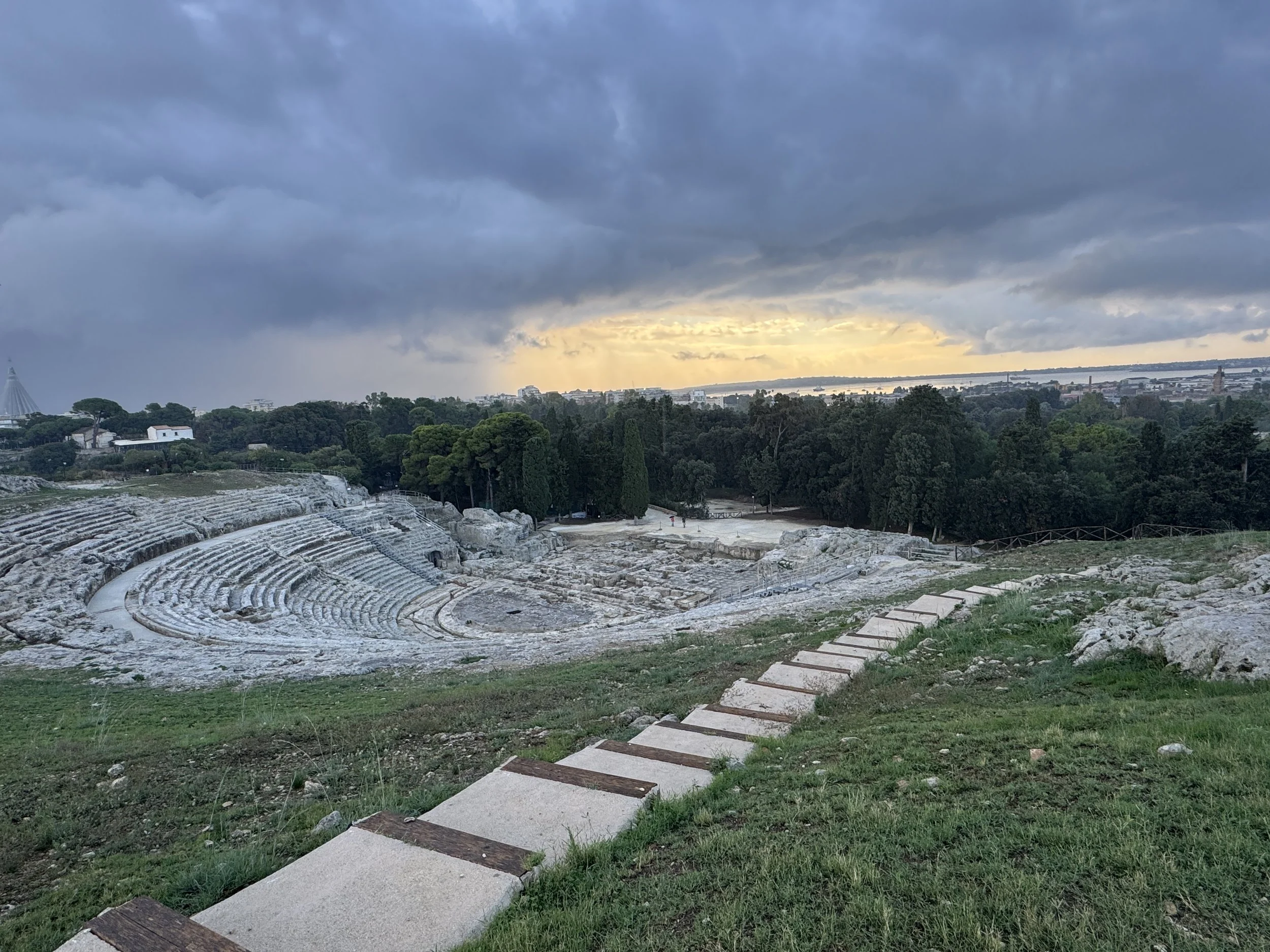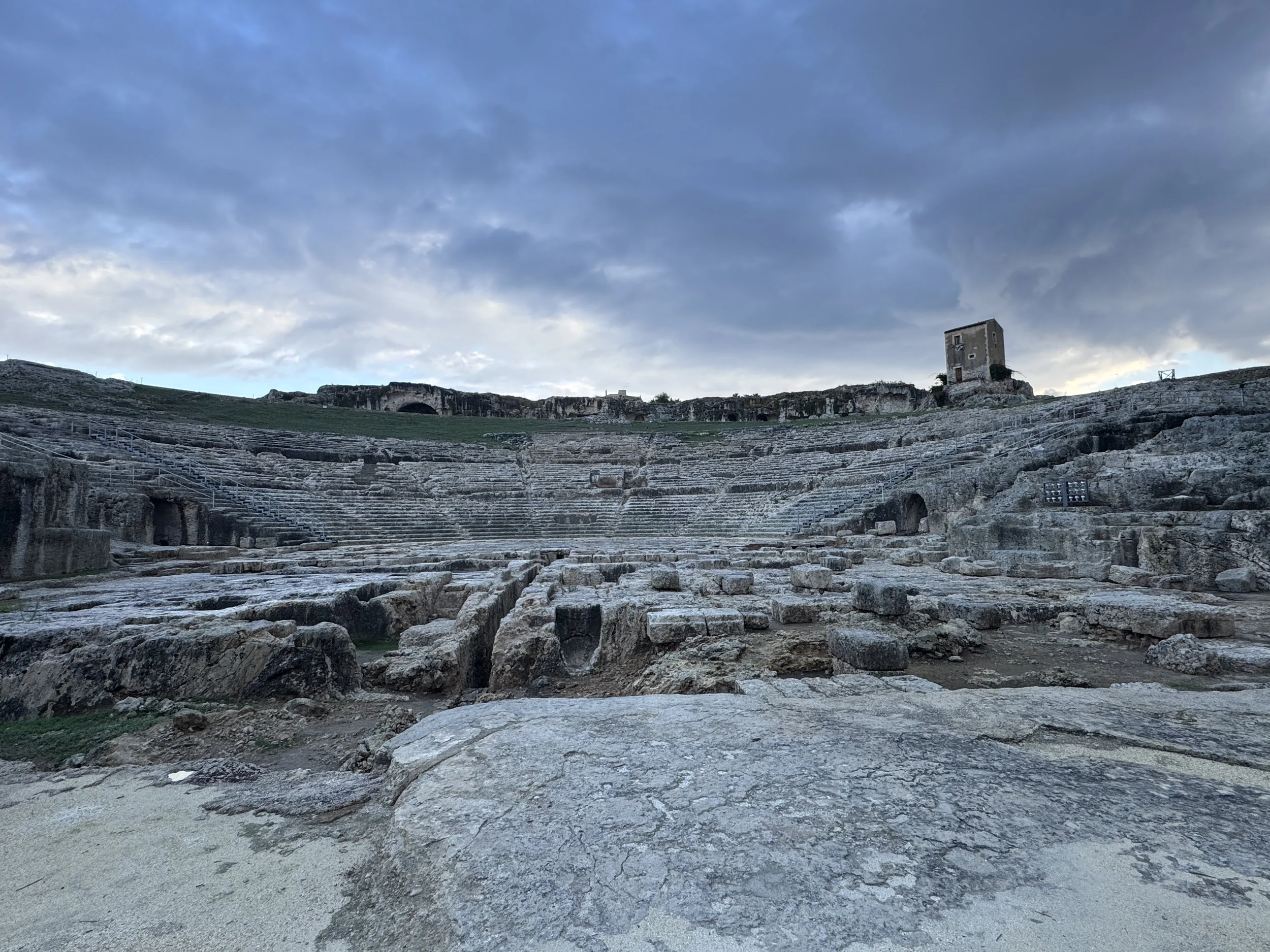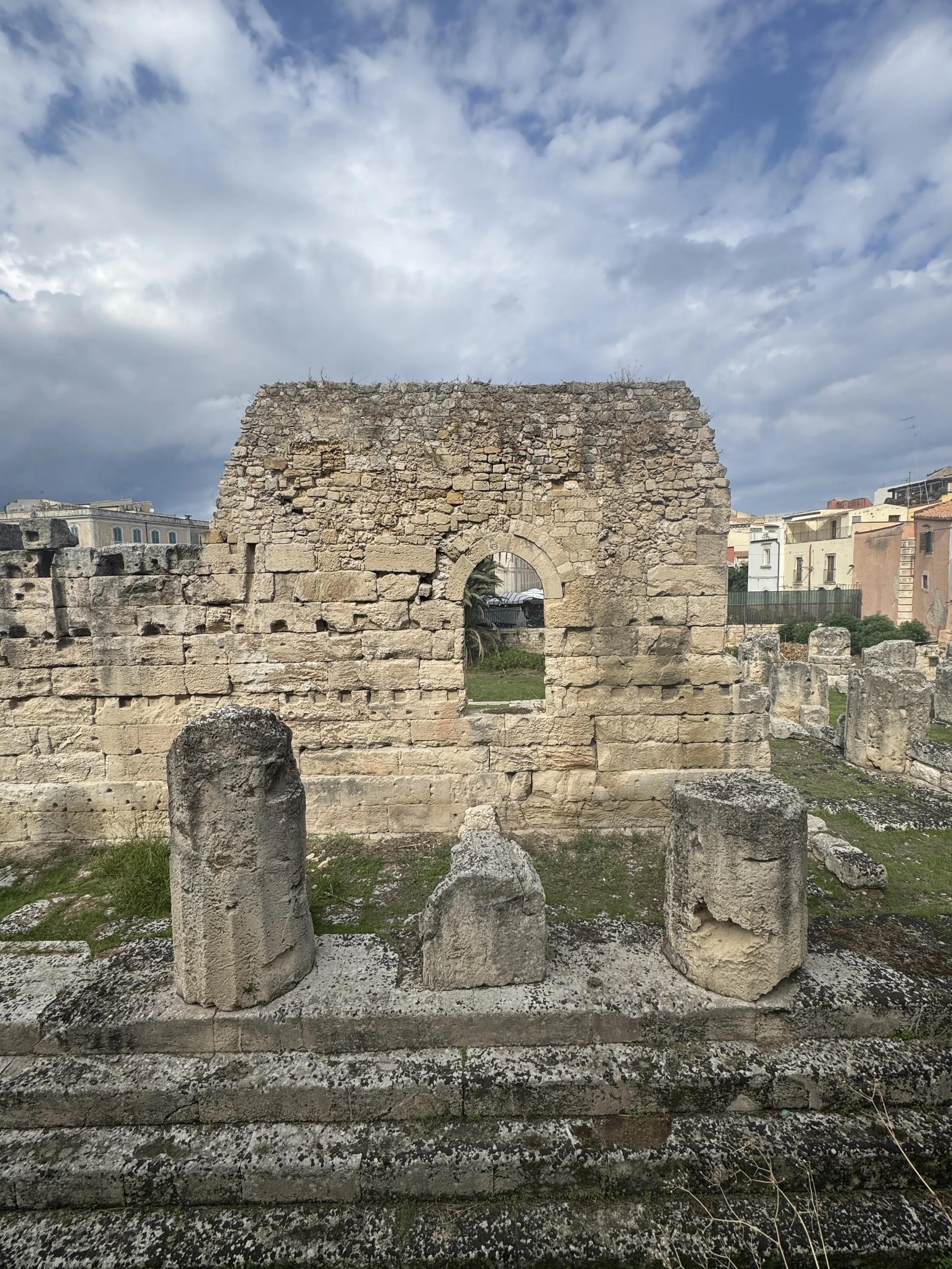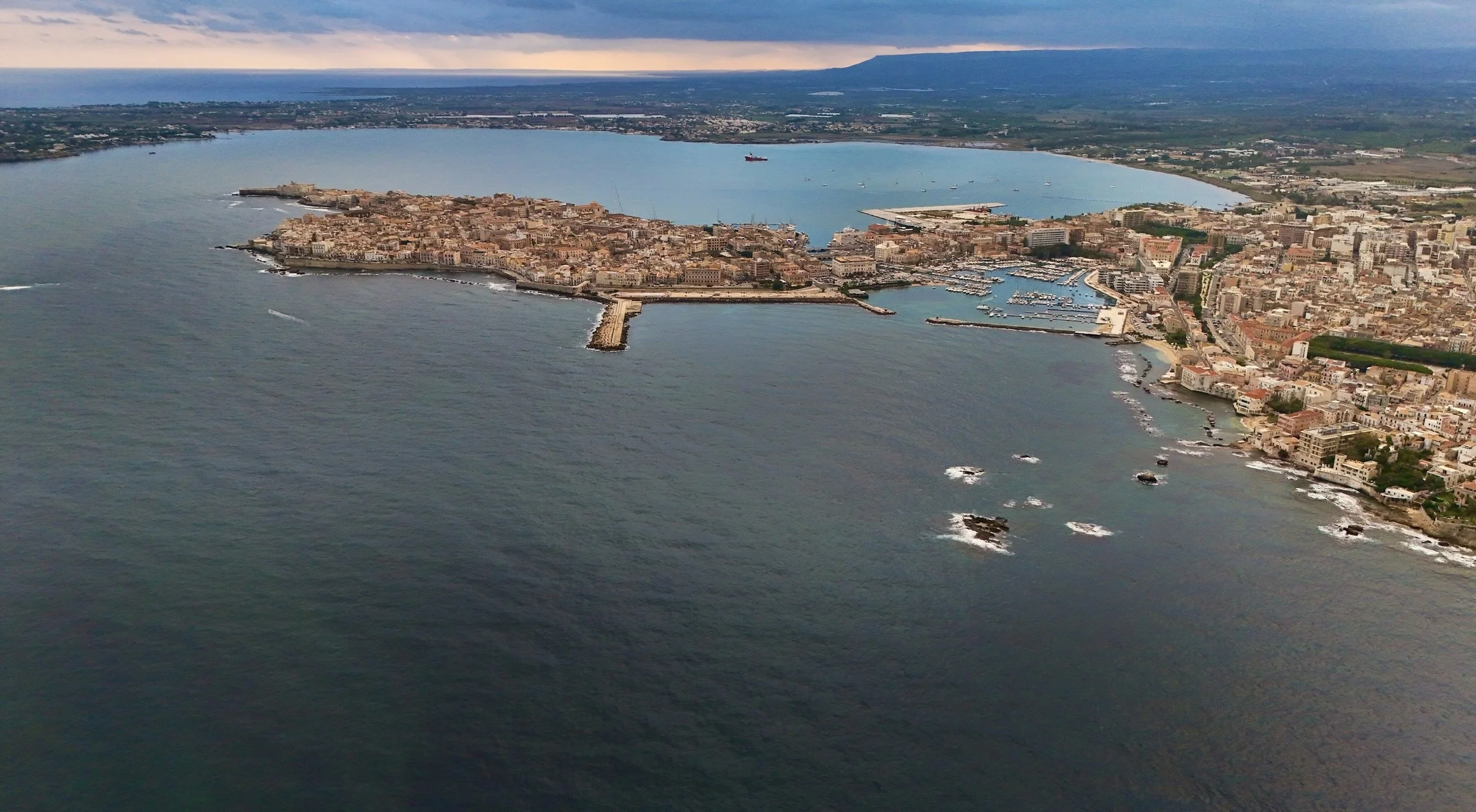Siracusa Sicily - Archeological Park and the Temple of Apollo
“Putting in at Syracuse, we stayed there for three days.” — Acts 28:12
When Paul stopped briefly in Syracuse, he entered one of the great cities of the Greek and Roman world—much of which can still be explored in the Siracusa Archaeological Park.
The Roman amphitheater, begun in the 1st century AD, was unfinished in Paul’s time. Carved partly from bedrock and partly built with stone blocks, it hosted Roman games of every kind including wild animal hunts and re-enactments of military sea battles. Today, sections of its underground passages and arched entrances remain visible.
Nearby lies the Altar of Hieron II, a 3rd-century BC structure believed to be the largest stone altar in the Greek world. Ancient accounts claim that hundreds of bulls could be sacrificed here during major festivals. The Paradise Quarry, once a center of stone cutting and forced labor, is now a lush garden filled with cavernous spaces created by ancient quarrying. Its most famous feature is the echoing Ear of Dionysius. At the heart of the park is the Greek theater, built between the 5th and 3rd centuries BC and still used today. Once seating up to 14,000 people, it offers sweeping views of the harbor. Along its upper terrace lie later Christian-era rock-cut tombs and a nymphaeum fountain that still flows with spring water. Outside the archeological park, on the small island of Ortygia (the center of historical Siracusa), is the 6th c Greek doric temple of Apollo.The temple had forty-two monolithic columns. There was an inscription on the top step dedicating it to Apollo and extolling its pioneering construction methods.
Visiting the archaeological park and the Ancient Greek remains on the island of Ortygia was a full day but doable. Unfortunately we did not have enough time to visit the archeological museum in the city, which is supposed to be one of the most important archeological museums in Europe. Sigh… never enough time!
Ancient Roman Amphitheater at Siracusa, Sicily


